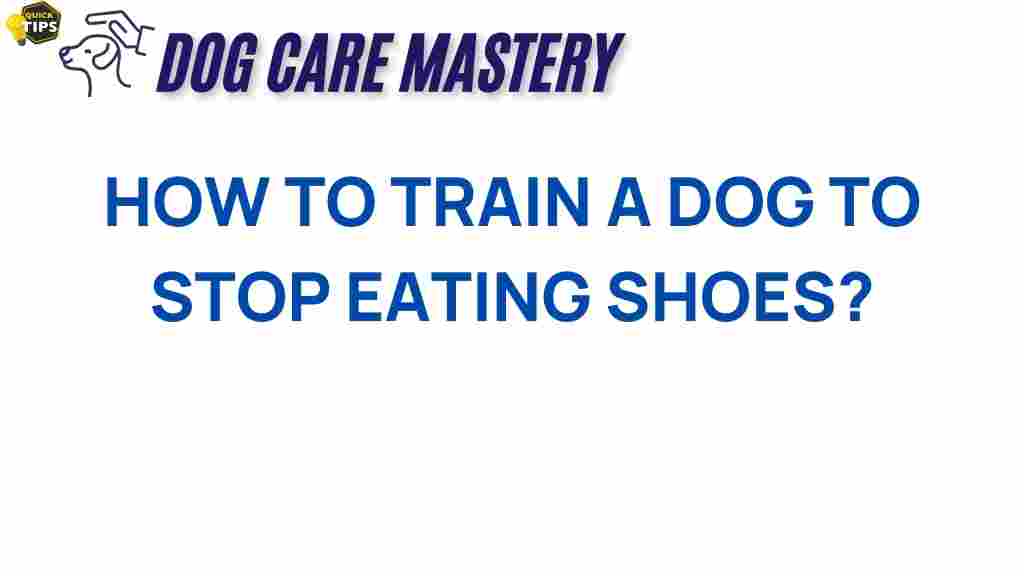Dog Training: Stop Your Dog from Devouring Shoes
Have you ever walked into your home to discover your favorite pair of shoes has been reduced to shreds? You’re not alone. Many dog owners struggle with this common issue. Understanding why your dog has developed a shoe-chewing habit and implementing effective dog training strategies can help you save your footwear and maintain a peaceful household. In this article, we’ll explore proven techniques to curb this behavior, troubleshoot common challenges, and help you foster a positive relationship with your furry friend.
Why Do Dogs Chew Shoes?
Before we dive into the training strategies, it’s essential to understand the reasons behind your dog’s shoe-chewing behavior. Dogs may chew on shoes for several reasons:
- Teething: Puppies experience discomfort during teething, leading them to chew on various objects for relief.
- Boredom: Dogs need mental and physical stimulation. Chewing shoes can be a way to entertain themselves.
- Anxiety: Some dogs chew on shoes due to separation anxiety or stress.
- Curiosity: Dogs are naturally curious animals and may be drawn to shoes because of their scent or texture.
Understanding these motivations is crucial for implementing effective dog training strategies.
Step-by-Step Training Strategies
Now that you have a better understanding of why your dog may be chewing shoes, let’s explore some effective dog training strategies to discourage this behavior.
1. Provide Appropriate Chewing Alternatives
One of the most effective ways to stop your dog from chewing on shoes is to provide them with appropriate alternatives. Here’s how to do it:
- Purchase durable chew toys that are specifically designed for your dog’s size and chewing strength.
- Introduce a variety of textures and shapes to keep your dog interested.
- Encourage your dog to use these toys by playing with them and rewarding them when they choose their toys over your shoes.
2. Implement Positive Reinforcement
Positive reinforcement is a powerful tool in dog training. Here’s how to use it effectively:
- Whenever you catch your dog chewing on an appropriate item, praise them enthusiastically.
- Offer treats when your dog chooses their toys over your shoes.
- Use clicker training to mark the desired behavior, followed by a reward.
3. Create a Shoe-Free Zone
To prevent your dog from accessing your shoes, create a designated area in your home where shoes are kept out of reach. Here are some tips:
- Use a shoe rack or closet to store shoes securely.
- Train your dog to stay out of certain rooms using baby gates.
- Keep your shoes in a location that is not easily accessible to your dog.
4. Teach the “Leave It” Command
The “leave it” command is a fundamental part of dog training that can be incredibly useful. Here’s how to teach it:
- Start by holding a treat in your hand and saying, “leave it.”
- Close your hand around the treat when your dog tries to get it.
- Once your dog stops trying to get the treat, praise them and give them a different treat from your other hand.
- Repeat this process until your dog consistently ignores the treat when you say “leave it.”
Once your dog has mastered this command, practice it with shoes instead of treats to reinforce the behavior.
5. Manage Anxiety and Boredom
If your dog is chewing on shoes due to anxiety or boredom, addressing these underlying issues is crucial:
- Increase physical exercise through daily walks, playtime, and interactive games.
- Incorporate mental stimulation activities, such as puzzle toys, to keep your dog engaged.
- Consider using calming products, such as anxiety wraps or pheromone diffusers, if anxiety is a significant factor.
Troubleshooting Common Challenges
Even with the best intentions, you may encounter challenges while trying to implement these dog training strategies. Here are some common issues and solutions:
1. Your Dog Still Prefers Shoes
If your dog continues to chew on shoes despite providing alternatives, consider the following:
- Ensure that the alternatives are more enticing than your shoes. Experiment with different textures and flavors.
- Limit access to your shoes and reinforce the “leave it” command consistently.
2. Your Dog is Unresponsive to Commands
If your dog struggles to respond to commands, try these tips:
- Practice commands in short, frequent sessions to keep your dog engaged.
- Use high-value treats as rewards to motivate your dog.
3. Mixed Signals from Family Members
Consistency is key in dog training. If family members send mixed signals, it can confuse your dog. To avoid this:
- Have a family meeting to discuss the training plan and ensure everyone is on the same page.
- Establish clear rules regarding the treatment of shoes and other items.
Conclusion
Chewing on shoes can be a frustrating problem for dog owners, but with the right approach, it is manageable. By understanding why your dog engages in this behavior and implementing effective dog training strategies, you can redirect your dog’s chewing habits, provide appropriate alternatives, and foster a positive environment. Remember, patience and consistency are critical components of successful training.
For more resources on dog training techniques, consider visiting this website. And if you’re looking for a community of fellow dog owners, check out this forum for support and advice.
Start your training journey today, and soon, your shoes will be safe from your furry friend!
This article is in the category Behavior and created by dogcaremastery Team
